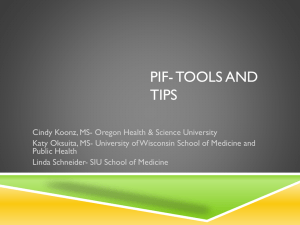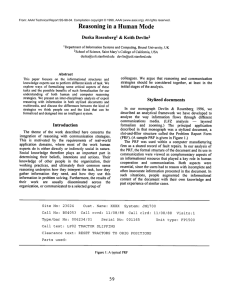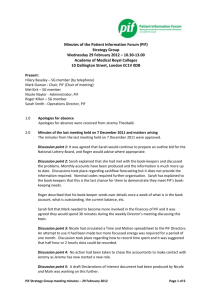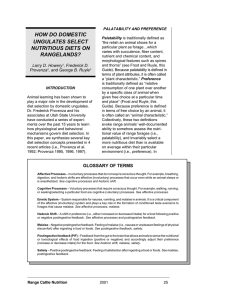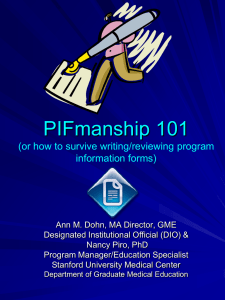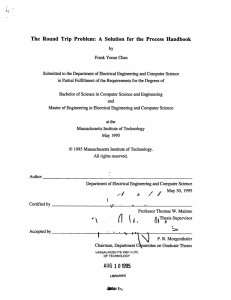Communicating the quality of evidence
advertisement
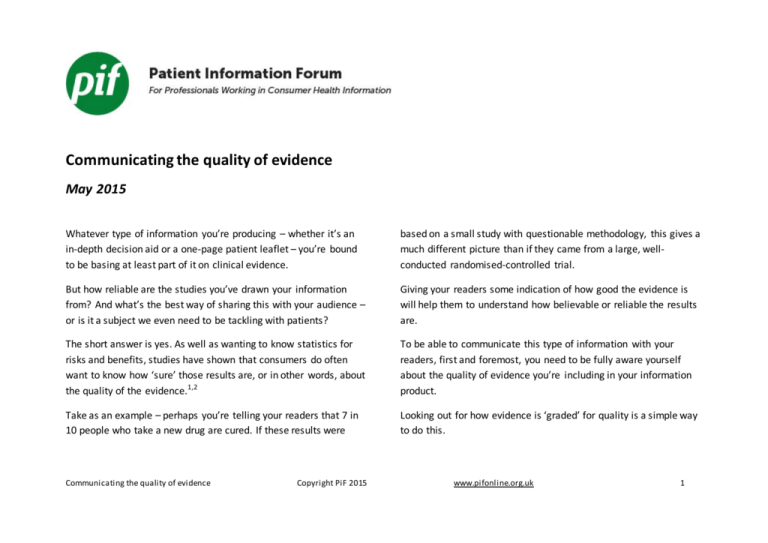
Communicating the quality of evidence May 2015 Whatever type of information you’re producing – whether it’s an in-depth decision aid or a one-page patient leaflet – you’re bound to be basing at least part of it on clinical evidence. based on a small study with questionable methodology, this gives a much different picture than if they came from a large, wellconducted randomised-controlled trial. But how reliable are the studies you’ve drawn your information from? And what’s the best way of sharing this with your audience – or is it a subject we even need to be tackling with patients? Giving your readers some indication of how good the evidence is will help them to understand how believable or reliable the results are. The short answer is yes. As well as wanting to know statistics for risks and benefits, studies have shown that consumers do often want to know how ‘sure’ those results are, or in other words, about the quality of the evidence.1,2 To be able to communicate this type of information with your readers, first and foremost, you need to be fully aware yourself about the quality of evidence you’re including in your information product. Take as an example – perhaps you’re telling your readers that 7 in 10 people who take a new drug are cured. If these results were Looking out for how evidence is ‘graded’ for quality is a simple way to do this. Communicating the quality of evidence Copyright PiF 2015 www.pifonline.org.uk 1 Grading the evidence There are various different systems that have been developed for grading evidence and recommendations. Three of the main systems you might come across are described below. You’re likely to see these scales, or similar, used in journal articles, clinical guidelines, and by organisations such as BMJ Clinical Evidence and Cochrane. You may not necessarily need to grade evidence yourself, but it’s good to be aware of the different scales and how they work, so you know how to interpret them and communicate results to your audience. OCEBM Levels of Evidence The Oxford Centre for Evidence-Based Medicine (OCEBM) Levels of evidence is a ‘hierarchy of the likely best evidence’. 3 It tells you what type of study is likely to give you the best evidence, depending on what information you’re looking for (e.g., treatment, prognosis, screening, etc). There are five different ‘levels’ for each information type, generally starting with systematic randomized trials at the top level, before working down to randomised trials, cohort studies and case series. The OCEBM Levels is a useful reference if you’re trying to find evidence, so you know what you should be looking for. It can also give you a quick indication of how good any evidence you’re assessing is likely to be. The OCEBM Levels don’t give an overall judgement on quality of evidence though (they don’t look at how good an individual study may be).4 View the OCEBM Levels SORT (Strength of Recommendation Taxonomy) The SORT system grades evidence according to the quality, quantity and consistency of the evidence.5 It then classifies the strength of recommendations based on that evidence as follows. Communicating the quality of evidence Copyright PiF 2015 A – Recommendation based on consistent and good-quality patient-oriented evidence. B – Recommendation based on inconsistent or limitedquality patient oriented evidence. www.pifonline.org.uk 2 C – Recommendation based on consensus, usual practice, opinion, disease-oriented evidence, or case series for studies of diagnosis, treatment, prevention or screening. Patient-oriented means outcomes directly affecting patients, such as survival, improvement in symptoms or quality of life. Diseaseoriented means physiological outcomes that may not be noticeable by the patient – such as changes to blood pressure or markers in the blood. The guidelines give further details on how evidence can be classified as good or limited quality. View the Strength of Recommendation Taxonomy (SORT) GRADE (Grading of Recommendations Assessment, Development and Evaluation) The GRADE approach to rating clinical evidence works by assessing the quality of evidence for a particular outcome. It’s probably the most comprehensive of the various different grading systems, and has been implemented by many organisations in the UK and worldwide, including the World Health Organization, the Cochrane Collaboration, BMJ Clinical Evidence and the National Institute for Health and Care Excellence (NICE). 6 Under the GRADE approach, evidence is assessed by looking at several factors, including the type of study, risk of bias/study limitations, how consistent and how precise the results are and how large an effect was seen. The evidence is then rated as follows.8 High – further research is very unlikely to change our confidence in the estimate of effect. Moderate – further research is likely to have an important impact on our confidence in the estimate of effect and may change the estimate. Low – further research is very likely to have an important impact on our confidence in the estimate of effect and is likely to change the estimate. Very low – any estimate of effect is very uncertain. Find out more about the GRADE approach These factors, along with a number of others, can ‘upgrade’ or ‘down-grade’ the rating. 7,8 Communicating the quality of evidence Copyright PiF 2015 www.pifonline.org.uk 3 Communicating quality of evidence to consumers It’s not unusual for there to be a lack of good evidence around a treatment option. Of course, if the evidence is really poor (there is only a limited number of very small studies, or you only have an expert’s opinion), you may need to question whether you cover that point at all. If it’s something that’s important to your audience though, or you know they’re likely to come across, you may need to. So how do you go about explaining poor quality to your audience? The key is to be open about it, and make it clear that the results aren’t definitive. “X drug has been shown to help improve symptoms in around 8 in 10 people. The study that looked at this drug wasn’t of very good quality though, which means we can’t be very certain of the results. It could be that the drug helps more or fewer people.” “You may have heard that X herbal therapy can help to treat your symptoms. However, the only studies that have looked at X have been of poor quality, so the results aren’t very reliable.” Finally, another way of communicating quality is by using symbols to convey the level of evidence, rather than just words. It’s been shown that using symbols can help improve people’s understanding (see Santesso et al 2014 for an example of how this can work in practice). 1,2 Some examples of language you can try are included below. “Your doctor may recommend you try X treatment. There haven’t been many good quality studies on this treatment, so there aren’t reliable figures about how well it works. Talk to your doctor to help you decide whether it’s something you want to try.” Communicating the quality of evidence Copyright PiF 2015 This may be an approach worth considering if you need to include a lot of detail on study results or treatment options in your information. www.pifonline.org.uk 4 References 1. 2. 3. 4. 5. 6. 7. 8. Santesso N, Rader T, Stromme Nilsen E, et al. (2014) A summary to communicate evidence from systematic reviews to the public improved understanding and accessibility of information: a randomized controlled trial. J Clin Epidemiol. In press, available online http://www.sciencedirect.com/science/article/pii/S0895435614002133 Akl EA, Maroun N, Guyatt G, et al (2007) Symbols were superior to numbers for presenting strength of recommendations to health care consumers: a randomized trial. J Clin Epidemiol, 60: 1298-1305 http://www.jclinepi.com/article/S0895-4356%2807%2900109-6/abstract OCEBM Levels of Evidence Working Group*. "The Oxford 2011 Levels of Evidence". Oxford Centre for Evidence-Based Medicine. http://www.cebm.net/index.aspx?o=5653. Howick J, Chalmers I, Glasziou P, et al. The 2011 Oxford CEBM Evidence Levels of Evidence (Introductory Document). Oxford Centre for EvidenceBased Medicine. http://www.cebm.net/index.aspx?o=5653. Ebell MH, Siwek J, Weiss BD, et al (2004). Strength of Recommendation Taxonomy (SORT): A patient-centered approach to grading evidence in the medical literature. Am Fam Physician.69(3):548-556. http://www.aafp.org/afp/2004/0201/p548.html. GRADE working group - organizations. http://www.gradeworkinggroup.org/society/index.htm, accessed 12 April 2015. Criteria for applying or using GRADE. GRADE working group. http://www.gradeworkinggroup.org/publications/Minimum_criteria_for_using_GRADE_web.pdf, accessed 12 April 2015. GRADE working group (2004). Grading quality of evidence and strength of recommendations. BMJ; 328:1490. http://www.gradeworkinggroup.org/publications/Grading_evidence_and_recommendations_BMJ.pdf. About the author About PiF This fact sheet was produced for PiF by Pippa Coulter. Pippa is a specialist in the production of consumer health content, with 15 years of experience in medical publishing and communications. She has extensive experience in producing high-quality, reliable and evidence-based health content for consumers. Pippa currently manages the health content library at Bupa. View Pippa's profile on Linkedin. PiF is a non-profit organisations working to improve the quality and accessibility of health information for patients and public across the UK. Our work involves: delivering resources and events for information producers; influencing to raise the profile of health information; and bringing together those interested in the field of health information via the PiF network. You can find out more at www.pifonline.org.uk . Communicating the quality of evidence Copyright PiF 2015 www.pifonline.org.uk 5







